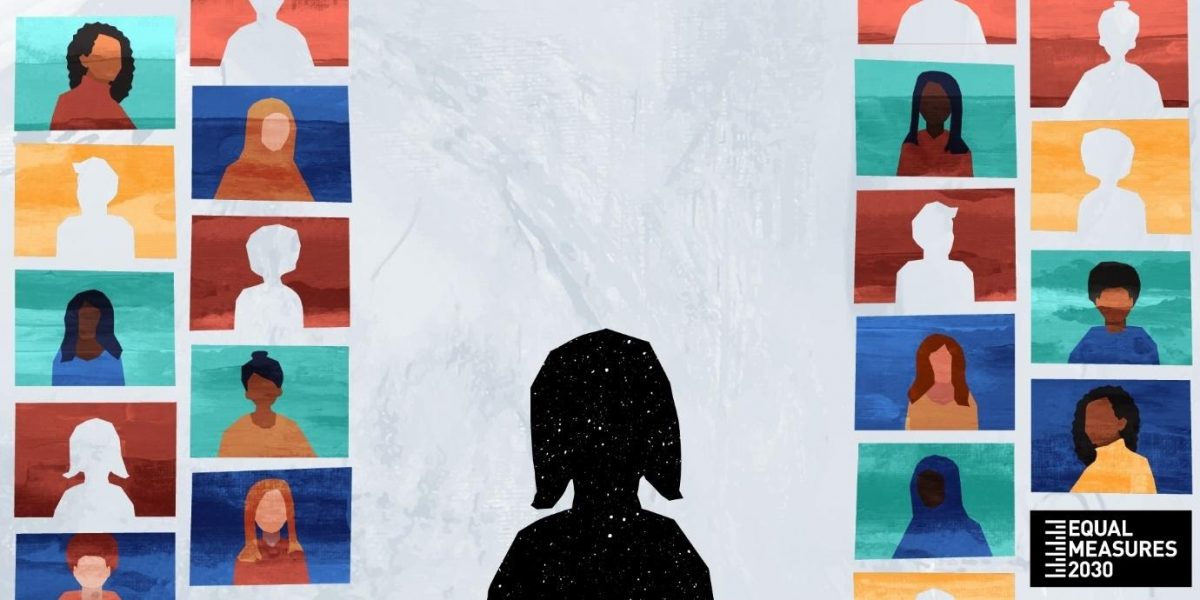Written by Milena Paramo, Regional Coordinator, CLADEM and Ester Pinheiro, Spanish-Speaking Communications Officer, Equal Measures 2030
The theme of this year’s International Women’s Day on March 8th was in line with the overriding theme of the sixty-seventh session of the Commission on the Status of Women (CSW67): “Innovation and technological change, and education in the digital age to achieve gender equality and the empowerment of all women and girls.”
The problems related to access, attendance and graduation at different levels of digital education, as well as the quality of education, are a challenge in the Latin American and Caribbean (LAC) region. The interruption of schooling during the COVID-19 pandemic affected millions of children and adolescents in the region, and it is still unclear how many of them were unable to connect virtually mode because they did not have electronic devices or an internet connection.
Although the proportion of women worldwide with access to the internet grew from 53% to 67% from 2015 to 2020, only 10% to 20% of students in the region have these devices, according to a 2022 report by ECLAC. In addition, 46% of the region’s children aged 5-12 live in households that are not connected to the internet. And an estimated 4 out of 10 women in the region are not connected and/or cannot afford effective connectivity in the region.
ICTs are also part of the map of inequalities affecting girls and women, but when it comes to representation of women and girls in science, the LAC region outperforms the global average STEM by 7 points, according to the 2022 SDG Gender Index produced by Equal Measures 2030.
However, for Milena Paramo, Regional Coordinator of the Latin American and Caribbean (LAC) Committee for the Defense of Women’s Rights – CLADEM, there is still a gender gap in terms of training areas (shortage of women in STEM) as well as barriers to access all the possibilities of the virtual world. “Women and girls have less access to devices, platforms and networks and their digital skills development is lower as a consequence of gender stereotypes that reproduce the imaginary of technology as a male issue,” she analyses.
Social platforms and networks are virtual spaces that are accessed to communicate, inform, search, entertain, train, treat health, work, etc. And in these spaces, girls and women are suffering forms of sexist, misogynist and racist violence. According to the UN, 73% of women have already been exposed to or experienced some form of violence in the online world. Even the platforms are violent, a global analysis of 133 artificial intelligence systems revealed that 44.2% reproduce sexist biases, with 25.7% also being racist, according to a Stanford report in 2021.
The most common violent behaviors in digital spaces against girls and women include harassment or intimidation (cyberbullying), a wide range of sexual aggressions (sexting without consent, sextortion, grooming, among others), smear campaigns, and all those interactions aimed at controlling, manipulating, deceiving or promoting the objectification, exploitation and subordination of women and girls. Considering this reality, how can we reduce the digital gender divide and guarantee the full participation of women and girls in technological development in Latin America?
According to Milena Páramo, the resources that LAC countries allocate to education, science and technology tend to be limited. This weakness could be reversed if governments realized that investment in these areas has the power to transform the region’s chances of recovery and sustainable economic growth in the mid-term.
Therefore, priority policies for digital inclusion are needed and CLADEM’s regional coordinator cites some recommendations that should be implemented:
- School connectivity so that children and adolescents can access knowledge; guaranteeing that the most marginalized children and adolescents have access to devices such as phones and tablets; and promoting learning content and applications.
- The development of infrastructure and digital services in rural areas, where there is a significant delay in the access, use and appropriation of ICTs.
- The redistribution of household duties in order to tackle one of the main historical constraints that have restricted women’s ability to enhance their potential in STEM areas.
- The incorporation of a gender and human rights perspective in digital education to boost girls’ educational trajectories, expanding their educational possibilities and influencing their future employment opportunities.
- Overcoming the digital skills deficit in girls, which increases in the case of girls from rural areas, ethnic origin, or lower classes. These policies should aim to deconstruct one of the key factors of inequality related to patriarchal cultural patterns.
- Policies that regulate the entire digital ecosystem to prevent platforms from increasing violence against women.
As addressed at CSW67, women’s and girls’ access to technologies must be a priority as the digital divide affects them in several ways, potentially preventing them from obtaining information on healthcare, domestic violence and access to educational resources.
The digital divide is still one of the major challenges in Latin American countries, which must make the future of education and digital transformation more inclusive and intersectional.

